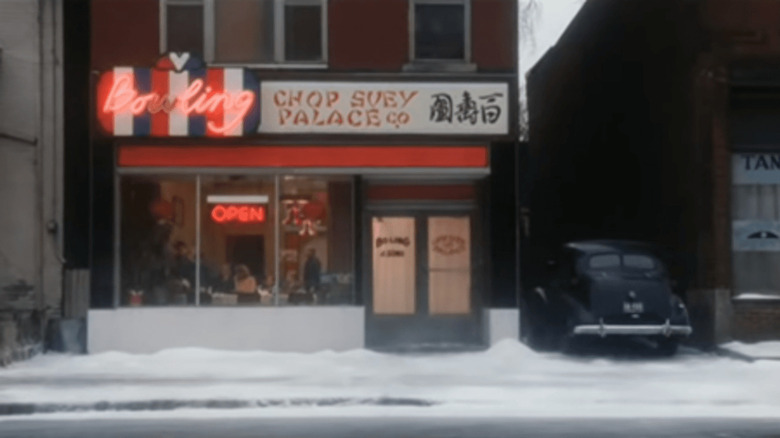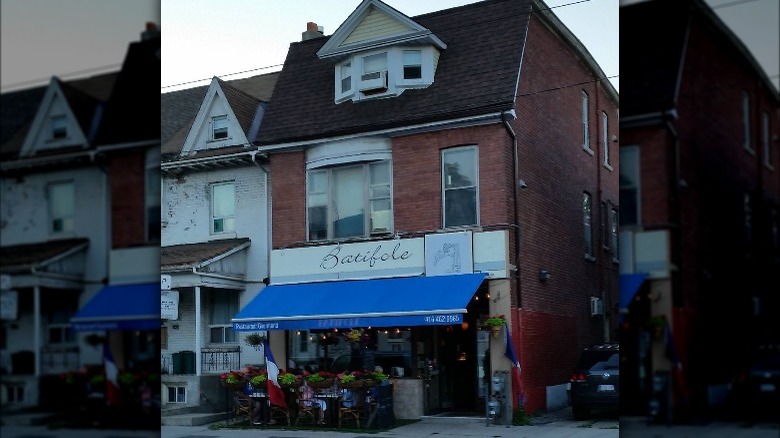What Ever Happened To The Chinese Restaurant In A Christmas Story?
When you think of the holiday flick, "A Christmas Story," a few iconic images likely pop into your mind. Who can forget the "fra-gee-lay" leg lamp that Ralphie called the "soft glow of electric sex gleaming in the window," while his father proclaimed it was a major award? Or Randy bundled up in so much winter clothing that he couldn't put his arms down? And it's hard not to look at a frozen metal object without picturing Flick's tongue stuck to the flagpole.
No wonder this film has so many loyal fans. "Last Christmas" director, Paul Feig, told Rotten Tomatoes that it was his fourth favorite Christmas movie of all time as it "recreates a very specific time period" in an authentic way and has a "great story that vignettes along." Study Finds reports that a 2019 survey conducted by One Poll crowned "A Christmas Story" the greatest holiday flick ever. It also received the second through fourth top spots for the "most iconic cinematic holiday moments" which included the fra-gee-lay scene, the continual warning to Ralphie that he'll shoot his eye out, and Flick's flagpole-licking mishap. America clearly loves this 1940's tale of family, growing up, and the quest for a Red Ryder BB Gun.
As a fan, you're likely curious about the stories behind this beloved tale. If you've ever wondered about the Bo'Ling Chop Suey Palace, the following information is sure to entertain.
A Christmas Story's restaurant now serves French cuisine
If one of your favorite "A Christmas Story" moments was the family's introduction to what the narrator called "Chinese Turkey," you will be relieved to know that the building still exists. The Torontoist declares the filming took place at Toronto's Chop Suey Palace located at 744 Gerrard Street East. No longer home to chop suey, egg rolls, or fortune cookies, this location now houses a French bistro called "Batifole." Apart from the signage and a new patio, the building's exterior remains pretty much the same.
So what was the reason for the addition of the sign containing "Bo'Ling" or ("Bowling" with a burnt-out "w")? Apparently, assistant director Ken Goch's childhood inspired this inclusion. According to Metaflix, when Goch was a kid, his mom was purportedly trying to find somewhere for them to stop for food. She saw a bowling alley sign with a darkened "w" and mistook it for a Chinese Restaurant bearing the name "Bo'Ling." Ironically, the bowling alley did have its own eatery. The odds are, however, that they were not treated to a roasted smiling duck.

